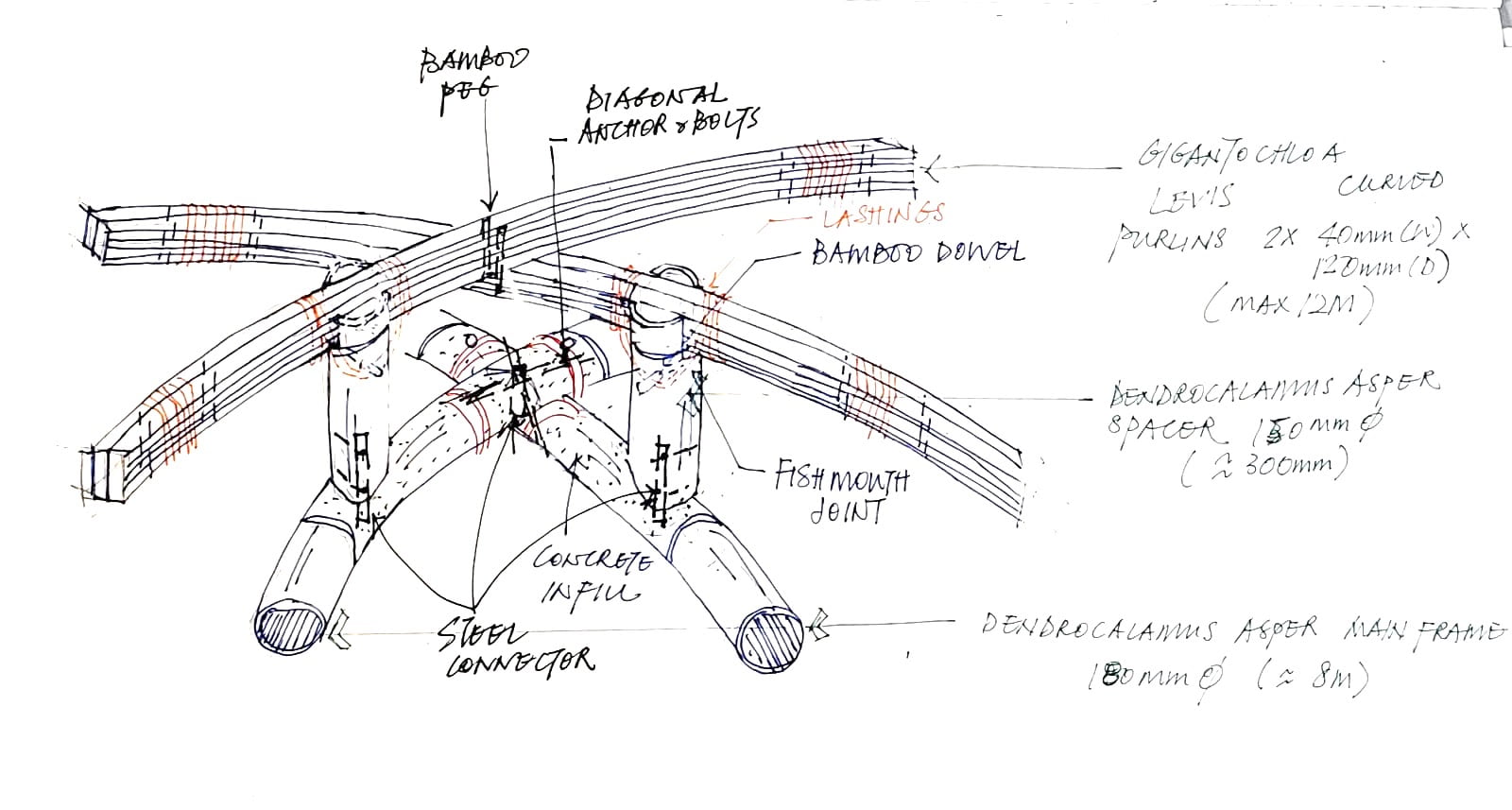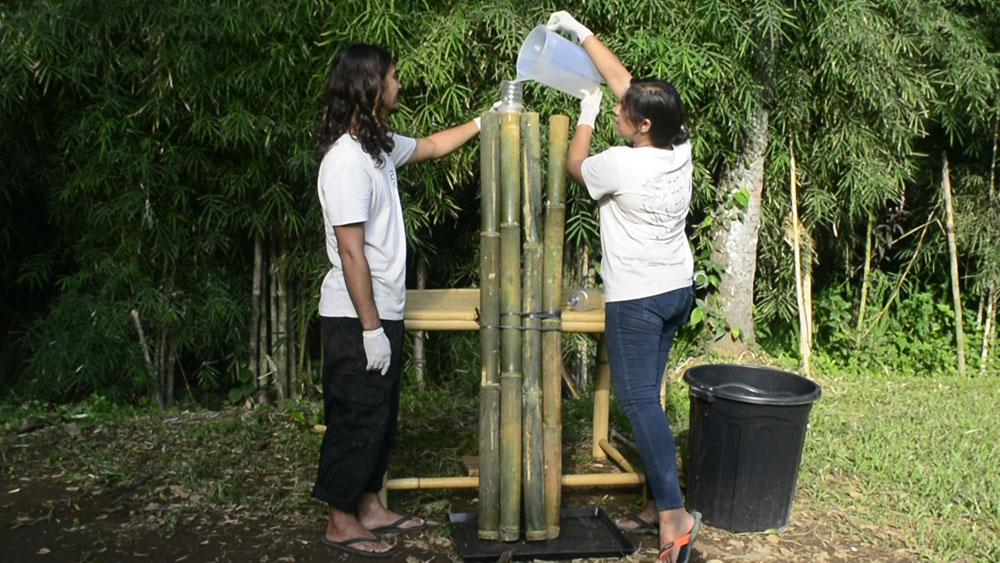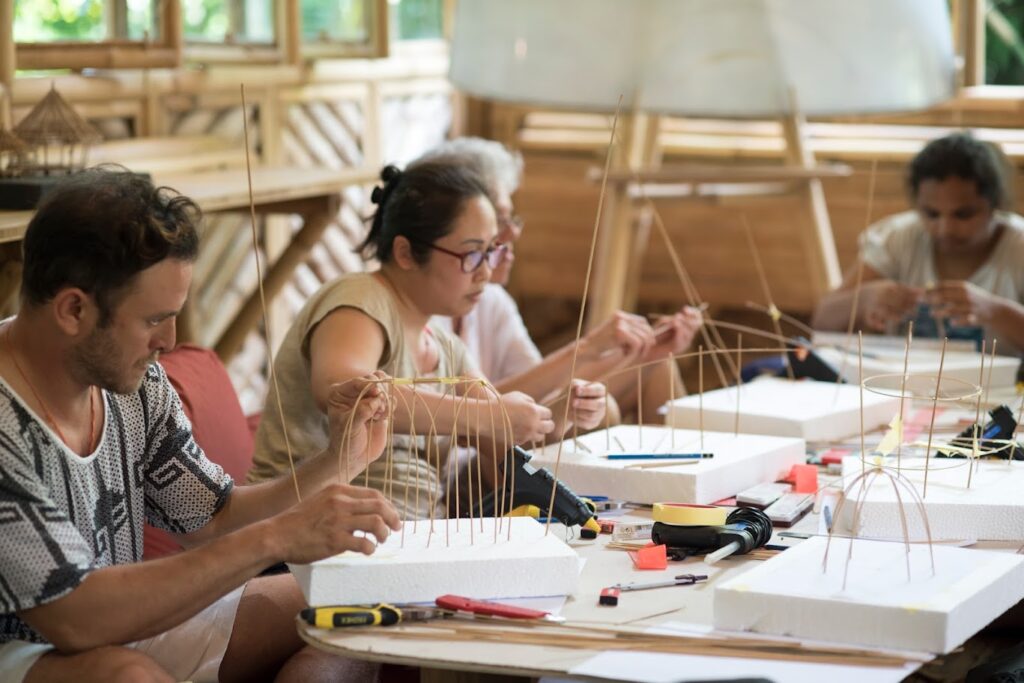Name of Project: A glamping cabin in Malaysia
Bamboo U Course Title Attended: Model making course
Year/ Month attended Bamboo U: 2021 /May
Country: Malaysia
My name is Hui Larn and I am an architect from Malaysia. I have worked in Hong Kong for the past 10 years on a few commercial projects but it has always been at the back of my mind to join Bamboo U’s 11-day course in Bali. Since it is not possible with the current pandemic, I am really pleased to have joined online Bamboo U’s 2nd Immersion course and the Model making course.
Bamboo U’s online model making course runs in parallel with and complements the Immersion course which gives us more hands-on experience in model making. The live sessions with different experts in the field has also broadened my understanding in model making. We started the course by learning to make a hyperboloid tower as an introduction and warm up before embarking on the assignment.
Our assignment was to design a glamping cabin in South Africa but I have adapted the brief by choosing a location closer to home with a setting next to a lake and surrounding mountains. My initial intention was to work with curves and triangulations to create forms that are organic and engaging the bending nature of the bamboo. Instead of starting from sketches, a series of explorations were done using models made out of coconut leaf strands which were easier to bend.
Concept Model



The concept model selected was based on a dome shaped structure which opens up to views on the front and sheltering walls achieved using three interconnected curves at the rear. It reminded me initially of the bottom edge of a dress but I have decided to develop the model based on a beetle’s wings which has provided the inspiration for the form and structure.
Development & Joinery
To create an uplift similar to a beetle’s wings, 2 out of the 3 lateral restraints in the concept model are removed from the top of the dome. Keeping only one of the lateral restraints also helps in resolving the complexity of the different layers of roof lattice where some of the rafters could stop short of the secondary restraint instead of extending to the main curved structure.
Another struggle encountered was in bending the bamboo stick. The bamboo sticks that I worked with were stiffer than I initially thought and they buckled when bent. To get around this, the building profile needed to be worked out in CAD before soaking the model-making sticks in warm water, then heating and bending the bamboo to the right curvature on a template.
The lessons from the Bamboo U Online Immersion strengthened my understanding of bamboo joinery and allowed me to create some joinery details. Detailing is integral to the development of such a tactile building where all structural members are exposed and expressed aesthetically.


During this phase of the design process I have also decided on the bamboo species to use for this project and the various structural elements. These include: Dendrocalamus asper for the main frame, main truss and secondary truss, Gigantochloa levis for the curved purlins and Gigantochloa apus for the rafters.
Final Structural Model and Takeaway


The model making course has given me the opportunity to explore different forms and structures as a creative process. Although less thought was given to the flooring, roofing and foundation compared to the longer Online Immersion, this course helps build confidence, even for someone who has no architectural background, in starting to realise one’s design and opens up our conversation with the material.
Going forward, I realise that there is still a lot of work to be done in building more realistic structures. In particular, I hope to find ways of simplifying and optimising the roof lattice in relation to the main structural members.
Working on the model takes a long time but we now understand the necessary emphasis of model making for a bamboo building and how working with our hands connects to our intuition and our cognitive process.
If you would like to learn about design with bamboo and building bamboo models have a look at out upcoming model making courses here: https://www.bamboou.com/onlinemodelmaking

Hui Larn is an architect from Malaysia. He has worked in Hong Kong on a few commercial projects in the past 10 years. Inspired by the many contemporary bamboo structures across Bali, Thailand, and Vietnam, he was looking forward to learning and getting more hands-on with such a beautiful and sustainable building material.
JUNE 13-24, 2025
The 11 Day Bamboo Build & Design Course in Bali
In 11 days, we'll show you how to build bamboo structures we’ll share all that it takes to build with nature.
Start Anytime
The Bamboo Harvesting Course
The Bamboo Harvesting Course is an online step-by-step training to harvest and care for your bamboo clumps to ensure their longevity and productivity. This maximizes the potential of this beautiful grass as a rapidly renewable resource.Whether you are an architect, builder, or sustainability enthusiast, this mini course will enable you to utilize this rapidly regenerative resource as a durable construction material.It will help remove any fear or doubt about the durability of bamboo and help you build reputable bamboo structures that stand the test of time!

















